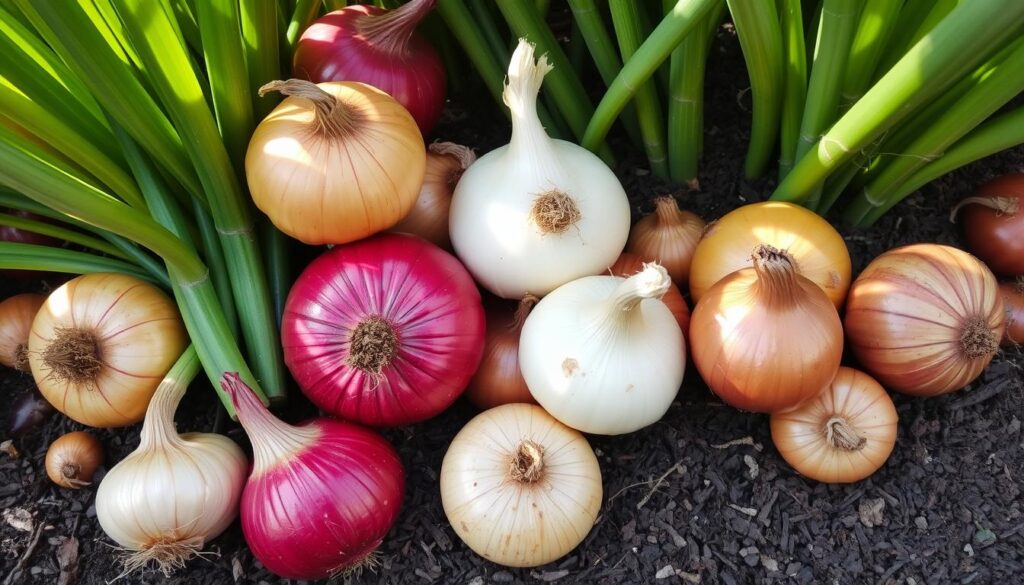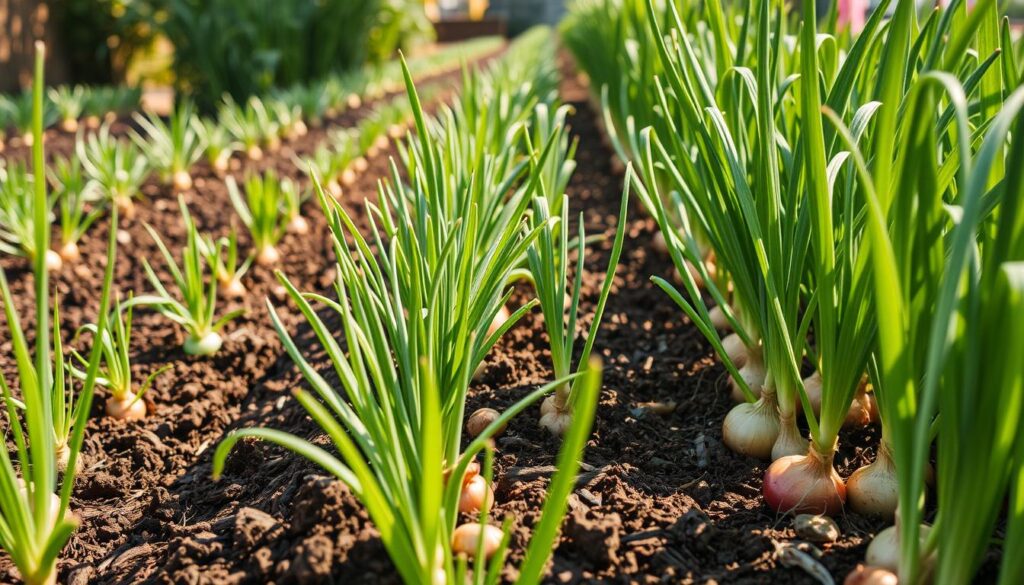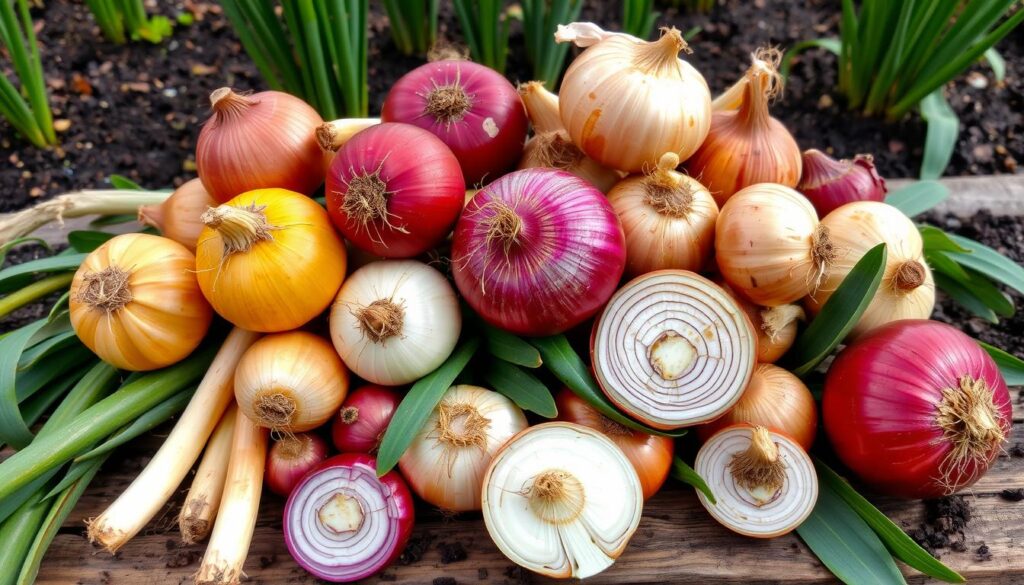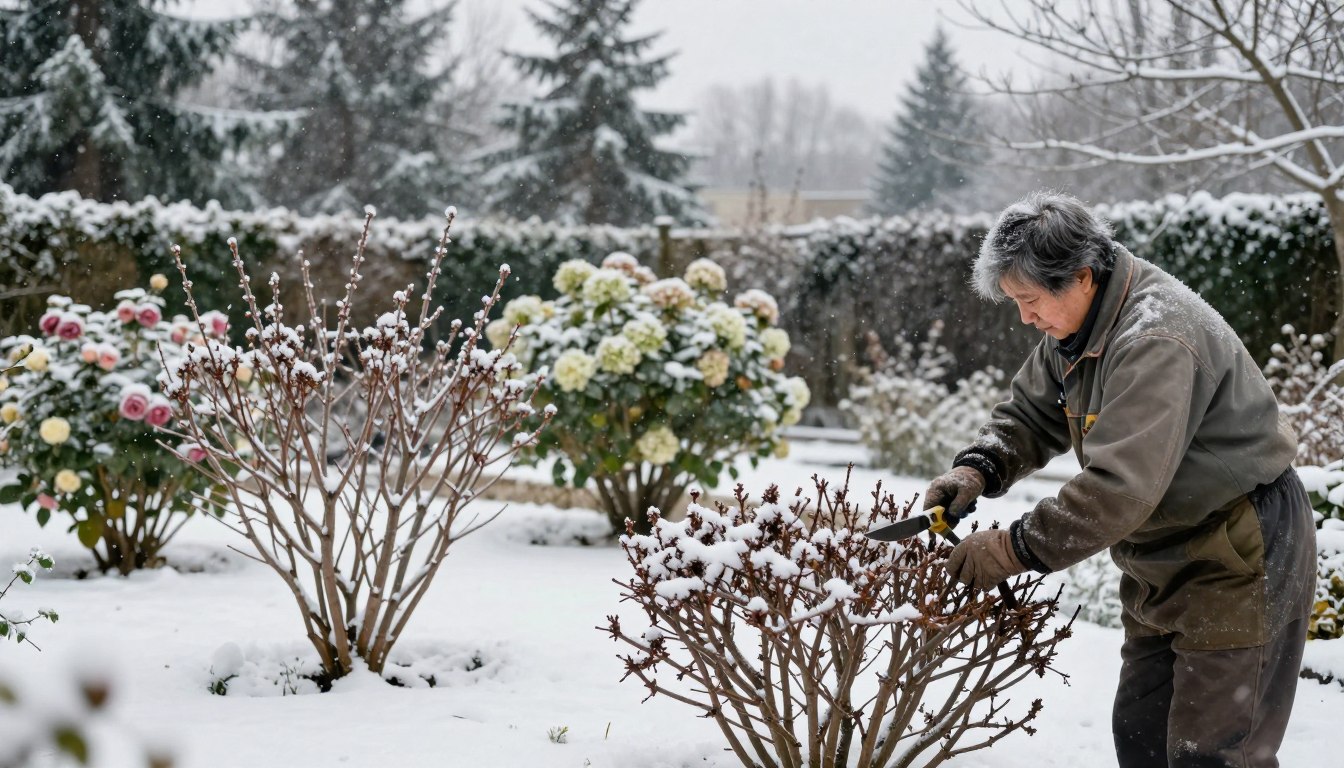As a gardener, I’ve found that picking the right onion variety is key. Onions come in three types: short-day, long-day, and day-neutral. Each type needs different daylight to grow well. Knowing this helps your onions grow big, taste great, and store well.
Key Takeaways
- Onions need specific daylight hours to grow big and flavorful.
- Short-day onions do well in southern areas with less daylight.
- Long-day onions grow best in northern places with longer days.
- Day-neutral onions can handle a variety of daylight conditions.
- Picking the right onion variety is essential for a good harvest.
Understanding Onion Growth and Daylight Requirements
Onion plants have a special connection with daylight hours. The length of the day affects how onions grow bulbs. This is important for gardeners and farmers to grow great onions.
Long-Day Onions
Long-day onions need 14 to 16 hours of daylight to grow bulbs. They do well in northern areas with long summers. Gardeners in these places can grow big, tasty onions.
Short-Day Onions
Short-day onions need only 10 to 12 hours of daylight. They’re perfect for southern areas with shorter days. Gardeners in warmer places can pick the right short-day onions for better yields.
Day-Neutral Onions
Day-neutral onions grow bulbs no matter the daylight. They can grow in many places, making them easy to use. These onions are great because they don’t need specific onion day-length requirements.
Knowing about onion bulb formation and the different types is key. By picking the right long-day, short-day, or day-neutral onions, gardeners can get a big and tasty harvest.
Choosing the Right Onion Varieties for Your Climate
Choosing the right onions for your area is key. Short-day and long-day onions need different climates. Knowing this helps you grow onions that are both plentiful and tasty.
Short-Day Onion Varieties
Short-day onions like Vidalia, Georgia Sweet, and Texas Sweet grow well in the south. They start forming bulbs when daylight is 10-12 hours long. This makes them perfect for early spring in warm places.
Vidalia onions are famous for their sweet taste. They grow great in the southern United States.
Long-Day Onion Varieties
Long-day onions, such as Walla Walla Sweet and Yellow Sweet Spanish, do well in the north. They need 14-16 hours of daylight. These onions are great for cold climates and keep well for cooking all year.
The Walla Walla Sweet onion is known for its large size and sweet flavor. It’s a favorite long-day variety.
It’s important to match your onions to your climate. By knowing what short-day and long-day onions need, you can pick the best ones for your area. This way, you’ll have a great onion harvest.

Planting and Growing Onions
Onions are a key crop in many gardens. They need the right timing and planting method to grow well. Knowing when to plant is key for a good onion harvest.
When to Plant
The best time to plant onions varies by type and climate. Short-day onions do well in the fall in warmer areas. Long-day onions are best in early spring in cooler places. Knowing your local onion planting schedule is important for a great crop.
Planting from Seeds or Sets
- Starting onions from seeds lets you choose from many onion varieties. It takes longer for them to grow.
- Using onion sets (small bulbs) gives a quicker harvest. This is why many gardeners prefer them.
Choosing the right onion growing method is important. Onions need well-drained, fertile soil and enough space. Following local onion planting guidelines is crucial for a successful harvest.

“Planting onions at the right time and using the appropriate method can make all the difference in the quality and yield of your crop.”
Choosing the Right Onion Varieties for Your Climate
When picking the right onions for your garden, think about your local weather and how much sunlight you get. Also, consider what you like to eat and how you plan to use the onions. Some onions, like Vidalia and Walla Walla, are sweet and mild. Others, like Copra and Red Creole, have a stronger taste.
It’s also important to think about how long onions last in storage. Long-day onions usually keep longer than short-day ones. Finding the right mix of flavor, size, and storage life will help you enjoy your onions all year.
- Consider your climate and daylight hours when selecting onion varieties
- Decide if you prefer sweet, mild onions or those with a more pungent taste
- Evaluate the storage potential of different onion types to plan your harvest
“The right onion can transform a dish from ordinary to extraordinary. Choosing the perfect variety for your garden is key to culinary success.”
By carefully considering these points, you can grow onions that do well in your area and taste great to you. The perfect onion is waiting for you!

Conclusion
Choosing the right onion varieties is key to growing onions well. Knowing the daylight needs of different onions helps me pick the best ones for my area. This way, I get a big harvest of tasty onions.
Whether I like sweet onions or strong ones for storage, there’s a type for me. Following some simple tips and choosing wisely, I can enjoy my onions. This knowledge helps me grow onions that thrive in my garden’s climate.
This guide has given me the tools to pick the best onions for my garden. I can now focus on growing onions that are hardy and fit my garden’s climate. With the right onions, I’m set for a great harvest.
FAQ
Q: What factors should I consider when choosing onion varieties for my climate?
A: When picking onion varieties, think about how much daylight they need. This should match your local climate and growing area. Onions need different amounts of daylight to grow well.
Q: What are the differences between long-day, short-day, and day-neutral onions?
A: Long-day onions grow best in the north with long summers. Short-day onions do well in the south with shorter days. Day-neutral onions can grow in many conditions.
Q: When is the best time to plant onions in my region?
A: The best time to plant onions varies by type and climate. Short-day onions are planted in the fall in the south. Long-day onions are sown in early spring in colder areas. You can grow onions from seeds or small bulbs called sets.
Q: How do I choose the right onion variety for my personal preferences and needs?
A: Think about the onion’s taste, size, and how long it keeps. Some onions, like Vidalia and Walla Walla, are sweet. Others, like Copra and Red Creole, are stronger. Long-day onions keep longer than short-day ones.






